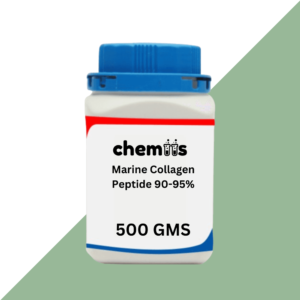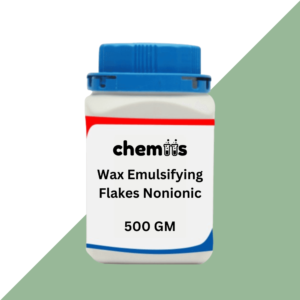Silica Gel for Column Chromatography (60-120 Mesh) is a highly purified, granular form of silicon dioxide that is commonly used as a stationary phase in the separation of chemical compounds. Its porous structure, large surface area, and high affinity for various molecules make it an excellent choice for chromatographic techniques such as column chromatography, thin-layer chromatography (TLC), and other separation methods. The 60-120 mesh size is particularly ideal for column chromatography, where it provides excellent resolution and efficient separation of mixtures based on differences in polarity and molecular size.
Applications
1. Column Chromatography
- Separation of Organic Compounds:
Silica gel (60-120 mesh) is predominantly used in column chromatography for the separation of organic compounds based on their polarity and molecular size. It acts as the stationary phase, where compounds in a mixture are adsorbed at different rates, enabling their separation when a mobile phase (solvent) is passed through the column. - Purification of Chemicals:
It is frequently used in chemical synthesis laboratories to purify synthesized compounds. For example, it is used in organic chemistry to isolate pure compounds from reaction mixtures by exploiting the differential adsorption properties of the components. - Analytical Applications:
Silica gel is used to analyze and separate complex mixtures, particularly in drug discovery, pesticide analysis, and natural product research.
2. Thin Layer Chromatography (TLC)
- Rapid Separation and Identification:
Silica gel for column chromatography can also be used in thin-layer chromatography (TLC) for quick and efficient separation of compounds from small-scale reactions. It provides a reliable and reproducible method for analyzing compound purity and identifying components in mixtures.
3. Flash Chromatography
- Fast and Efficient Separation:
Silica gel 60-120 mesh is ideal for flash chromatography, where it is packed into a column and used for rapid purification processes. It is particularly effective when a quicker separation process is required, such as in high-throughput labs.
4. Preparation of Pure Compounds
- Purification of Bioactive Compounds:
Silica gel is used to purify bioactive compounds, such as alkaloids, steroids, and other natural products, by separating them from impurities based on their solubility and polarity.
5. Environmental Analysis
- Separation of Environmental Pollutants:
Silica gel is also employed in the analysis of environmental samples to isolate and purify pollutants, such as pesticides and heavy metals, from soil and water samples for further study or removal.
6. Pharmaceutical and Drug Development
- Purification of Active Pharmaceutical Ingredients (APIs):
In pharmaceutical applications, silica gel is used to purify active pharmaceutical ingredients (APIs) and intermediates. The gel helps in isolating compounds during the drug development process, ensuring high-quality products.
7. Food Industry
- Separation and Purification in Food Analysis:
Silica gel is utilized in the food industry for separating and purifying flavors, fragrances, and additives. It helps in the isolation of bioactive compounds from natural sources, contributing to the development of food additives or nutraceuticals.
Safety and Handling
Hazards:
- Health Hazards:
Silica gel is considered to be generally safe to handle. However, fine dust particles, if inhaled in large amounts, may cause irritation to the respiratory system. Chronic inhalation of fine silica dust can lead to more serious health concerns such as silicosis, a lung disease. - Skin Contact:
While silica gel is non-toxic, it may cause mild irritation upon prolonged contact. It is recommended to wash with water if exposed to skin. - Eye Contact:
Dust particles can cause irritation or dryness if they come into contact with the eyes. Rinse eyes thoroughly with water to alleviate irritation.
Precautions:
- Personal Protective Equipment (PPE):
- Dust Mask or Respirator: When handling silica gel powder, it is advised to wear a dust mask or respirator to avoid inhalation of the fine particles.
- Gloves: Protective gloves should be worn to prevent prolonged skin contact, especially when working with large quantities or handling the gel for an extended period.
- Safety Goggles: Wear goggles to protect eyes from accidental exposure to dust or particles.
- Ventilation:
Always ensure the workspace is well-ventilated, especially when handling large quantities of silica gel powder or when performing chromatography processes that generate dust.
Storage:
- Storage Conditions:
Store silica gel in a cool, dry place, away from moisture. Silica gel should be kept in airtight containers to prevent it from absorbing moisture from the air, which can affect its adsorption properties. - Shelf Life:
Silica gel remains stable for long periods if stored properly, although its efficiency may decrease slightly with prolonged exposure to humidity.
First Aid Measures:
- Inhalation:
Move to fresh air immediately if inhalation occurs. Seek medical advice if symptoms such as coughing, wheezing, or shortness of breath persist. - Skin Contact:
Wash the affected area with soap and water. Seek medical advice if irritation continues. - Eye Contact:
Rinse eyes with plenty of water for at least 15 minutes. If irritation persists, seek medical attention. - Ingestion:
Although not commonly ingested, if swallowed, seek medical attention immediately.
Disposal:
- Dispose of silica gel in accordance with local regulations. Typically, it can be discarded as non-hazardous waste. However, it should be separated from other chemical wastes and handled carefully to prevent environmental contamination.








Vinay Tiwari (verified owner) –
Excellent service overall.
Harshit Reddy (verified owner) –
Secure payment options.
Aditi Menon (verified owner) –
Super smooth process.
Bhavika Shah (verified owner) –
Highly recommended.
Bhavika Shah (verified owner) –
Five-star experience.
Jayant Mishra (verified owner) –
Five-star experience.
Hitesh Suri (verified owner) –
Very dependable delivery.
Charu Ghosh (verified owner) –
User-friendly website.
Asha Fernandes (verified owner) –
Reasonably priced.
Reema Das (verified owner) –
Truly professional approach.